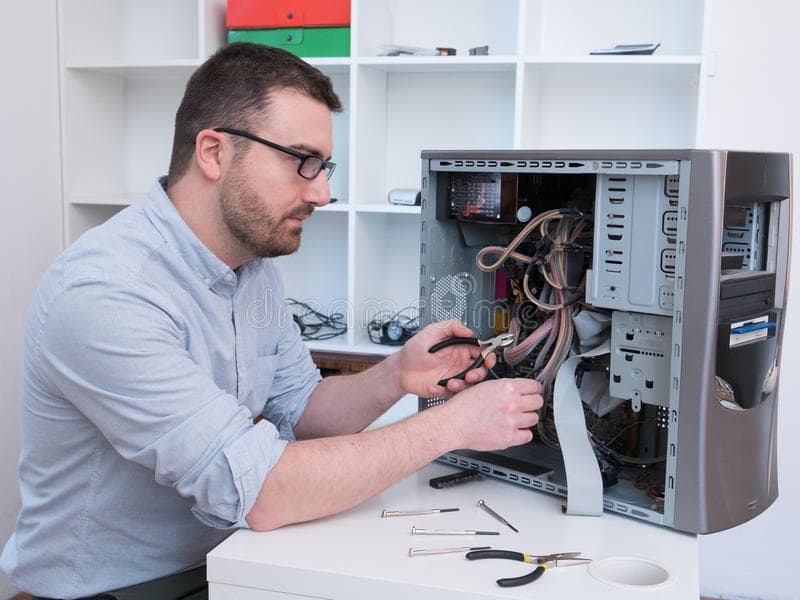Overclock my Intel-based processor to speed up my PC

Read how to increase the frequency of your Intel processor (Overclocking). Step-by-step instructions. Your computer is running very fast. Incredibly fast, at least compared to a PC you had ten or twenty years ago.
But still, it can work much faster. If this statement prompts you to find out how to do this, you will find the information you need in this article.
Overclocking
Overclocking is a set of actions to increase the frequency of the device, increase the voltage above the norm, than certified by the manufacturer of the device in order to increase the speed of its operation. The maximum CPU frequency level should be within the limits, at which stable operation of the device at maximum performance is maintained.
Please note that overclocking significantly increases heat generation (i.e., it warms up more), increases power consumption, and the device is also faster to run at maximum load.
We are going to overclock the processor from Intel because this company is still the leader in the number of installations for desktop PCs. In the article we will talk about the overclocking process for one of the latest models from the “Core” (K-series) family, which are unlocked for overclocking.
But the general steps will be true and can be applied to most desktop computers sold or assembled in the last few years. However, before you get started, look for additional tips on the network to overclock your particular processor model.
Step one: check your configuration
Before you start, make sure that your equipment can be dispersed. If you have purchased a ready-to-use PC or built a computer, you may not remember the exact configuration and all possible restrictions set by the manufacturer.
Therefore, you should download a special program such as “CPU-Z” and use it to find out the exact model of your processor and motherboard (with all letters, numbers, version or release number). Then go to the official website of the manufacturer and find the full specification for the device.
Processor
Intel has developed and marketed many processors, but only the “K-” and “X-” series of processors are good for overclocking.
And the “K” series in this sense, most likely, represents a certain variable, rather than the actual product line, this letter in the name of the processor means that it is “unlocked” (unlocked) and ready to be overclocked by the end user.
Support for this feature is found in the “i7”, “i5” and “i3” models, as well as in all new “X-series” processors with additional power. So if you’re buying an Intel processor with the knowledge that you’re going to try to overclock it, you need a “stone” version of “K” or “X”.

A full list of processors that are “separated” and can be overclocked by the end user, as well as additional overclocking recommendations, can be found on the official Intel website. We will use Intel Core i7-2600K for overclocking for this guide.
Is it possible to overclock Intel processors that aren’t in the “K” and “X” series? Of course, yes, but it’s much more complicated, and you’ll probably need a motherboard that supports additional specialized functions.
Intel is also trying to prohibit overclocking of “locked” processors to the point that they are constantly releasing and updating their software, closing all the loopholes found earlier that allow overclocking of “locked” equipment.
Such policy of the company causes a storm of discontent in the ranks of enthusiasts testing their hardware.
I must also mention a certain concept known among enthusiasts as the “silicon lottery”. The microarchitecture of modern processors is incredibly complex, as is the process of manufacturing them.
Even if two processors have the same model and theoretically should be completely identical, it is possible that they will be accelerated and work differently. Don’t be upset if your particular processor and the entire configuration as a whole can’t achieve the same overclocking performance as someone who has described their results on the Internet.
That’s why it’s incredibly important to go through a long, difficult process on your own, rather than just trying to connect someone else’s settings – neither of the two different processors will run the same way.
Motherboard
Now you need to make sure that your motherboard is suitable and functional enough to overclock your CPU. Technically, absolutely any motherboard should provide the ability to overclock your processor, but some of them are designed specifically for such “unfolded” processors, and some are not.
If you choose which motherboard to buy, I can recommend any “gaming” motherboard or find information on the Internet, which motherboard will meet all the necessary requirements for overclocking your model of the processor.
They are of course more expensive than standard models, but have access to “UEFI / BIOS” updates and special software developed by the manufacturer to simplify overclocking.
You may also find reviews of overclockers, enthusiasts who discuss the settings needed to overclock specific models of processors on a particular motherboard and the resulting performance gains. Top-of-the-range and gaming motherboards from ASUS, Gigabyte, EVGA and MSI are good solutions in this regard.
That goes without saying, but I will still remind you that you need a motherboard with a socket that is compatible with your specific processor. For the latest unlocked Intel processors, this is either the “LGA-1151” slot (K series) or “LGA-2066” (X series).

